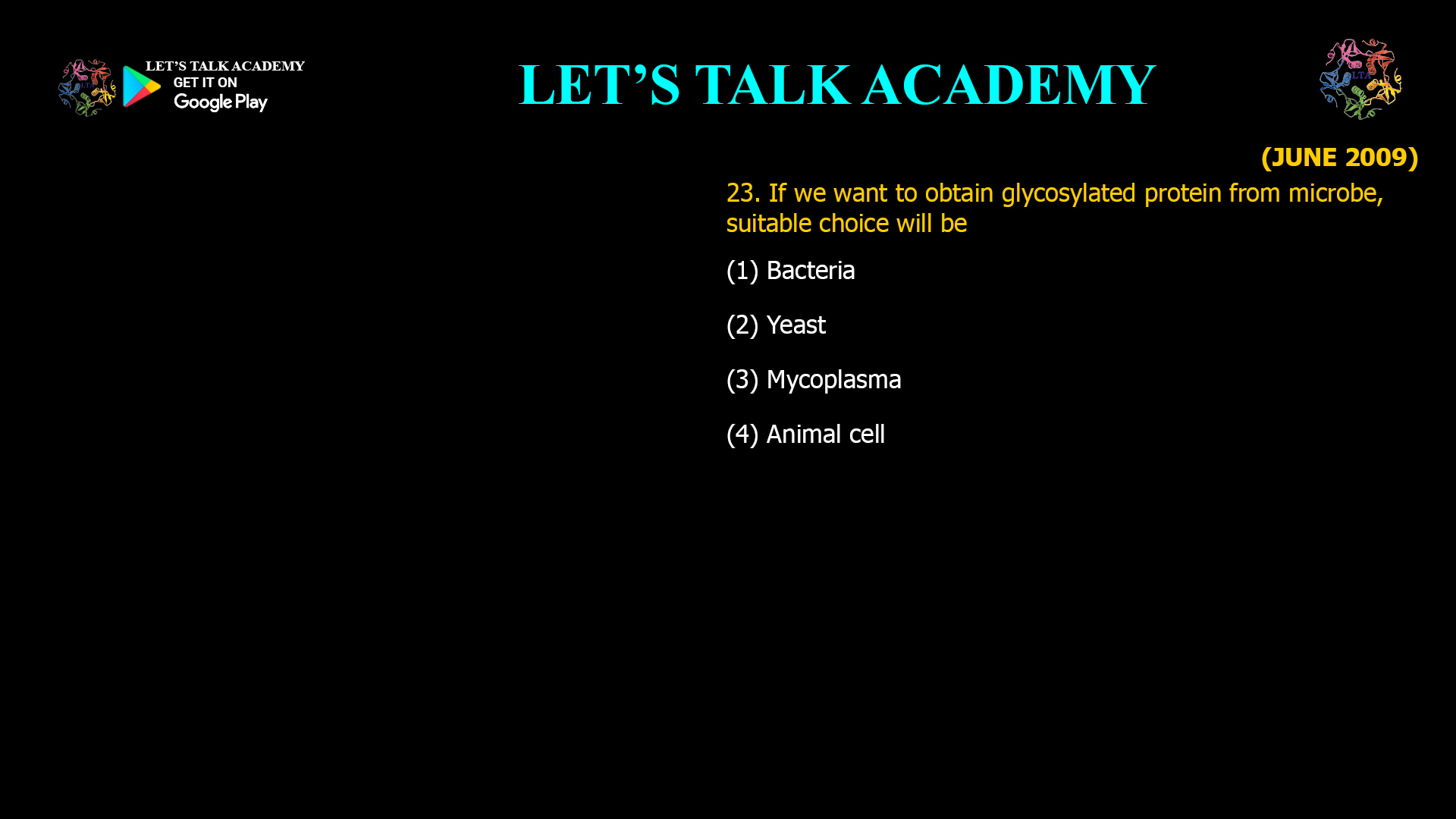- If we want to obtain glycosylated protein from microbe, suitable choice will be
(1) Bacteria (2) Yeast
(3) Mycoplasma (4) Animal cellConcept: glycosylated proteins and expression hosts
Glycosylated proteins (glycoproteins) carry carbohydrate chains added post-translationally, most commonly through N-linked and O-linked glycosylation in the endoplasmic reticulum and Golgi of eukaryotic cells. Correct glycosylation is crucial for folding, stability, activity and pharmacokinetics of many therapeutic proteins, so the choice of host organism must provide appropriate glycosylation enzymes and organelles.
Option (1) Bacteria
-
Most common bacterial hosts such as Escherichia coli lack the eukaryotic endoplasmic reticulum–Golgi system and do not naturally perform complex N-linked or O-linked glycosylation on secreted proteins.
-
Although specialized systems from organisms like Campylobacter have been engineered into E. coli to enable experimental N-linked glycosylation, these are still limited and not the standard choice for obtaining correctly glycosylated eukaryotic proteins.
Therefore, option (1) is not suitable for routine production of glycosylated proteins.
Option (2) Yeast – correct
-
Yeasts such as Saccharomyces cerevisiae and Pichia pastoris are unicellular eukaryotic microbes that possess ER and Golgi compartments with native N-linked and O-linked glycosylation pathways.
-
They can secrete high levels of recombinant glycoproteins and have been extensively engineered to “humanize” their glycosylation, making them attractive microbial hosts for glycosylated therapeutic proteins.
Hence yeast is the appropriate answer when the question specifically asks for a microbe capable of producing glycosylated proteins.
Option (3) Mycoplasma
-
Mycoplasmas are wall-less bacteria with very small genomes that lack many metabolic pathways and do not perform complex eukaryotic glycosylation of recombinant proteins.
-
They are regarded more as contaminants of cell cultures than as expression systems, and are not used as hosts for glycosylated protein production.
Thus, option (3) is incorrect.
Option (4) Animal cell
-
Mammalian animal cell lines (for example, CHO cells) are the gold standard for producing human-like glycosylated therapeutic proteins, because they provide complex, regulatory N-linked glycosylation similar to human cells.
-
However, animal cells are not microbes; they are multicellular-eukaryote–derived cells grown in tissue culture, so they do not satisfy the question’s condition of “from microbe,” making this option inappropriate despite their excellent glycosylation capability.
SEO‑oriented introduction (for article use)
Choosing the right host to obtain glycosylated protein from a microbe is essential for successful recombinant biopharmaceutical production. Among standard expression systems, yeast stands out as the most suitable microbial platform because it combines eukaryotic N-linked glycosylation machinery with microbial growth advantages, whereas bacteria and mycoplasma lack complex glycosylation and animal cells, although ideal for glycoproteins, are not microbial hosts.
-



